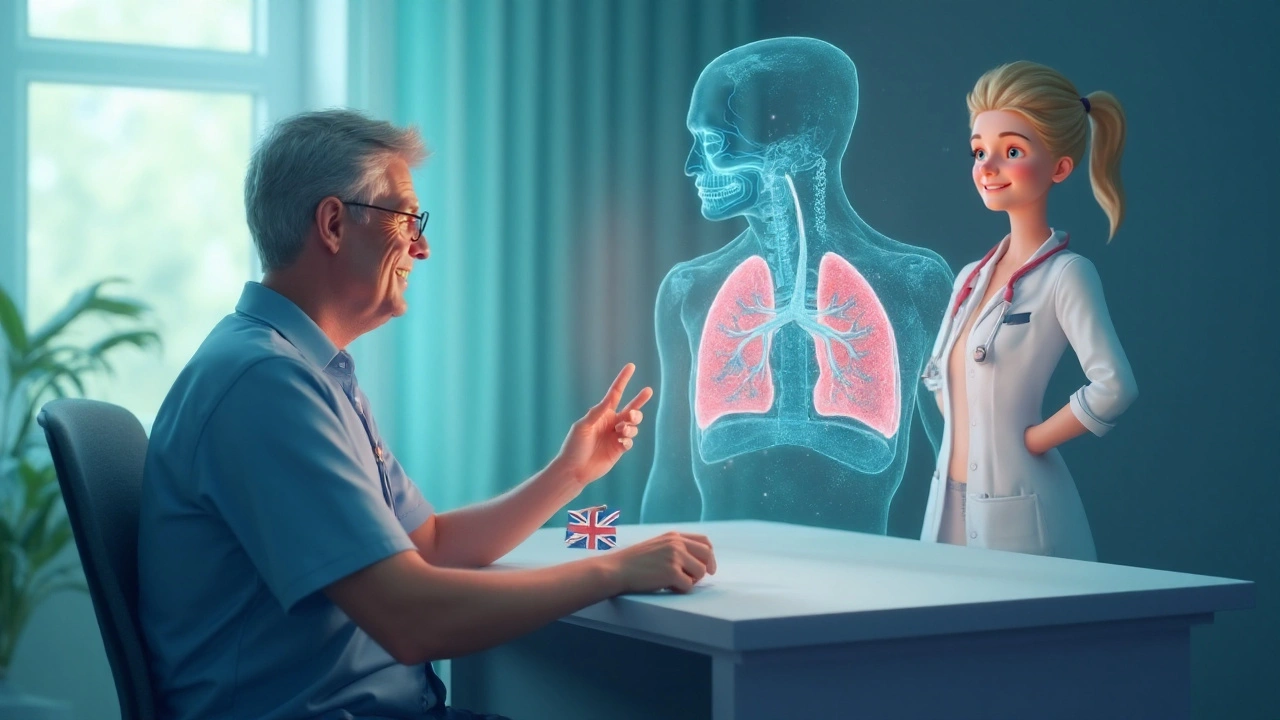Chronic Lung Disease: What You Need to Know
When you hear "chronic lung disease" you might picture a severe cough or constant breathlessness. In reality, it covers a range of conditions that make breathing harder over time. Knowing the basics can help you spot problems early and take steps that actually improve daily life.
Common Types and Symptoms
The most common chronic lung diseases are COPD (chronic obstructive pulmonary disease) and asthma. COPD usually stems from long‑term smoking or exposure to dust and fumes. Symptoms include a persistent cough, excess mucus, and a feeling of tightness in the chest. Asthma, on the other hand, often starts in childhood and shows up as wheezing, shortness of breath, and sudden flare‑ups triggered by allergens, exercise, or cold air.
Other conditions fall under the same umbrella: bronchiectasis (damaged airways that keep getting infected), interstitial lung disease (scarring of the tissue around the air sacs), and pulmonary fibrosis (thickening of lung tissue that limits oxygen transfer). While each disease has its quirks, they share warning signs such as chronic cough, frequent respiratory infections, and reduced stamina.
Managing Your Lung Health
The good news is that many steps can slow down the damage and make breathing easier. First, quit smoking or reduce exposure to pollutants. Even cutting back a few cigarettes a day can improve lung function over months. Second, follow a medication plan prescribed by your doctor—bronchodilators, inhaled steroids, or other drugs work best when taken regularly, not just during attacks.
Third, add simple lifestyle tweaks. Breathing exercises like pursed‑lip breathing or diaphragmatic breathing can train your lungs to use oxygen more efficiently. Staying active with low‑impact workouts—walking, swimming, or cycling—keeps the respiratory muscles strong. Nutrition matters too; foods rich in antioxidants (berries, leafy greens) support overall lung tissue health.
Lastly, keep an eye on vaccinations. Flu shots and pneumonia vaccines reduce the chance of serious infections that often worsen chronic lung conditions. If you notice a sudden change—more coughing, new wheezing, or unexplained fatigue—contact your healthcare provider right away. Early intervention can prevent a flare‑up from turning into a hospital stay.
Living with chronic lung disease isn’t a life sentence. By understanding the type you have, watching for symptoms, and sticking to a practical management plan, you can protect your lungs and maintain a good quality of life.
How COPD and Sinusitis Influence Each Other: A Clear Guide
Explore the link between COPD and sinusitis, how they affect each other, shared mechanisms, diagnosis tips, and combined treatment strategies in plain language.
